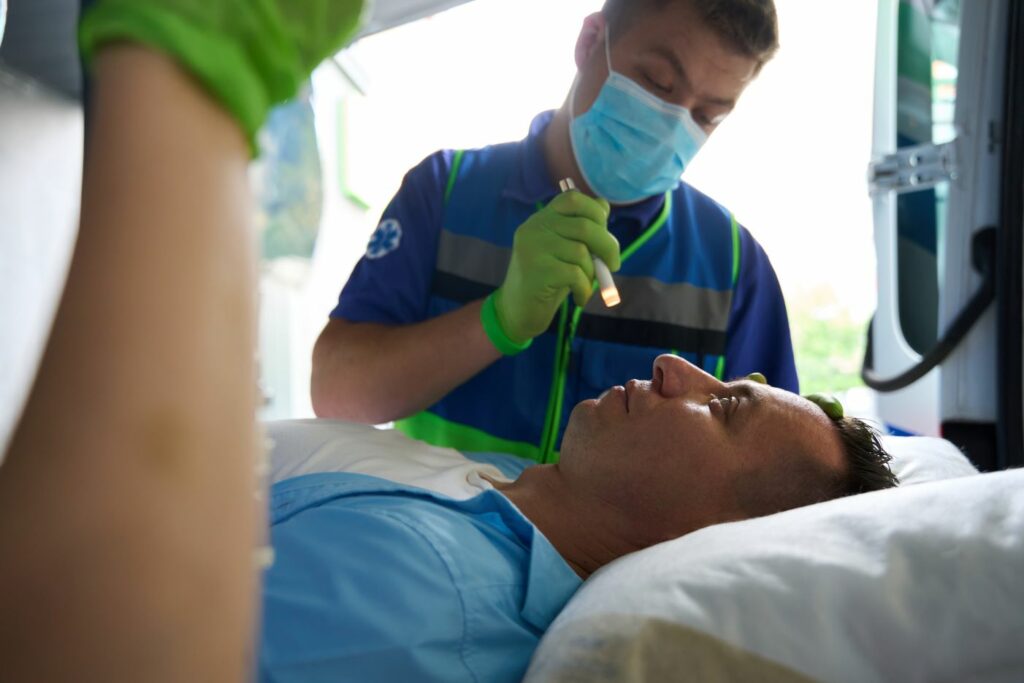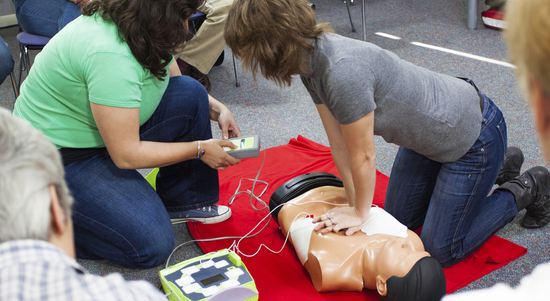Introduction
In emergency situation clinical situations, the difference in between Basic Life Support (BLS) and Advanced Life Support (ALS) can be lifesaving. Both techniques represent different levels of treatment, training, and intervention in vital scenarios. While BLS concentrates on essential techniques that anyone can find out, ALS integrates more advanced interventions generally carried out by health care specialists. This write-up intends to explore the subtleties of Fundamental vs Advanced Life Assistance, giving a comprehensive understanding for nonprofessionals and professionals alike.
Basic vs Advanced Life Support: Understanding the Trick Differences
When contrasting Basic vs Advanced Life Support, it's important to recognize what each involves.
Basic Life Support (BLS) entails the initial actions taken to receive life till specialist aid gets here. This includes:
- Checking Responsiveness: Evaluating if the person is conscious. Identifying No Breathing: Identifying whether the casualty is taking a breath or requires prompt intervention. Taking Switches on Compressions: If CPR is necessary, it's critical to alternate rescuers to maintain efficient compressions.
On the other hand, Advanced Life Support (ALS) consists of more specialized treatments frequently reserved for trained paramedics or clinical workers. ALS might involve:
- Hospital Codes and Methods: Following particular guidelines set by medical organizations during emergencies. Public Defibrillator Use: Using AEDs (Automated External Defibrillators) to recover typical heart rhythm. Advanced Respiratory tract Administration: Strategies such as intubation.
Both BLS and ALS are important in emergency situation situations yet serve various duties and require differing levels of training and expertise.
The Significance of Basic Life Support
What Comprises Basic Life Support?
Basic Life Support primarily contains:
Cardiopulmonary Resuscitation (MOUTH-TO-MOUTH RESUSCITATION): A method made use of when someone is less competent and not breathing. Choking Alleviation Techniques: Maneuvers such as the Heimlich maneuver for subconscious individuals. Recognition of Heart attack Signs and symptoms: Knowing exactly how to recognize when a person requires immediate assistance.Key Components of BLS Training
Understanding BLS training is vital for any individual looking to be gotten ready for emergency situations:
- Hands-on experiment mouth-to-mouth resuscitation techniques. Learning how to operate an AED effectively. Familiarization with acknowledging signs of distress.
BLS Accreditation: Why Is It Relevant?
Obtaining a BLS certification has come to be progressively crucial in numerous areas-- particularly health care, education, and civil service. Many companies mandate this certification as a prerequisite for employment.
Who Ought to Discover Basic Life Support?
The response is basic: every person! Whether you're an instructor, instructor, or just a concerned person, understanding BLS can equip you to act emphatically in emergencies.
The Function of Advanced Life Support
Defining Advanced Life Support Procedures
Advanced Life Support exceeds what laypersons can give and consists of:
Administration of medications Intravenous access Advanced respiratory tract managementTraining Required for ALS
Professionals that give ALS should undertake considerable training:
- Medical understanding concerning pharmacology Skills for intrusive procedures Understanding healthcare facility codes and protocols
When Is ALS Necessary?
ALS becomes important during extreme medical emergencies where basic steps are Additional resources insufficient-- such as cardiac arrest or severe trauma situations needing immediate intervention.
Comparative Evaluation: BLS vs ALS
|Attribute|Basic Life Support|Advanced Life Support|| ------------------------------|----------------------------|--------------------------------|| Training Degree|Minimal (nonprofessional level)|Extensive (medical professionals)|| Interventions|MOUTH-TO-MOUTH RESUSCITATION, AED use|Medication administration|| Equipment Used|AEDs|IV tools, intubation devices|| Scope of Technique|First assessment|Comprehensive emergency treatment|
This table highlights substantial distinctions in extent, training needs, and interventions between BLS and ALS.
Essential Skills for Reliable Fundamental Life Support
Checking Responsiveness: The Very First Step
The first action when encountering a less competent person is to inspect their responsiveness by carefully trembling them or calling their name loudly. If there's no response:
Call emergency solutions immediately. Begin mouth-to-mouth resuscitation if there's no breathing detected.Identifying No Breathing: A Crucial Evaluation
Knowing how to recognize no breathing can imply the distinction between life and death:

If there's no breathing spotted within 10 seconds, start CPR immediately.
Performing Effective CPR Strategies in BLS
Taking Switches on Compressions: The Significance of Teamwork
In a team setting throughout a resuscitation initiative:
Ensure that rescuers take transforms every 2 minutes or after 30 compressions to stop fatigue. Keep track of time using a clock or timer if available.This synergy not only enhances efficiency however ensures continual top quality compressions throughout the process.
Lower Compression Depth: An Usual Mistake
Many individuals ignore the needed deepness of breast compressions throughout mouth-to-mouth resuscitation:

- Aim for at least 2 inches deep in grownups while permitting complete recoil in between compressions. A reduced compression deepness can significantly decrease blood circulation performance during heart arrest.
Advanced Strategies in Advanced Life Support
Hospital Codes and Procedures: What You Need to Know
Understanding hospital codes is crucial when functioning together with healthcare specialists during emergency situations:
Code Blue typically shows cardiac arrest; responders must prepare accordingly. Familiarity with neighborhood methods guarantees efficient communication with medical facility team when EMS arrives.Public Defibrillator Usage: Lifesaving Technology
AEDs are coming to be increasingly common in public spaces:
Most devices give audible instructions; follow them closely. Ensure that nobody is touching the patient during defibrillation delivery.Utilizing an AED without delay increases opportunities of survival substantially following cardiac arrest events.
Maintaining Calmness Under Pressure
In high-stress circumstances-- like carrying out mouth-to-mouth resuscitation or coordinating rescue efforts-- maintaining composure can be challenging yet important:
Take deep breaths before engaging in lifesaving measures. Delegate jobs among staff member effectively based on everyone's capability; this minimizes chaos.A tranquil temperament aids ensure that activities taken are deliberate instead of hasty or panicked-- essential in maintaining life until professional help arrives.
FAQ Section
Q1: What are some indicators that a person might need BLS?
A1: Indications consist of unresponsiveness, no normal breathing patterns, and noticeable distress indicating possible cardiac arrest or choking incidents.
Q2: How long does it require to get accredited in BLS?
A2: The majority of programs use qualifications within 4-- 6 hours; nevertheless, recertification is usually called for every 2 years as a result of updates in methods and strategies taught!
Q3: Can anybody execute basic life support?
A3: Yes! Although training isn't essential lawfully talking-- it's extremely recommended-- to make sure reliable methods are Check over here adhered to properly!
Q4: What equipment is typically made use of throughout sophisticated life support?
A4: Devices might consist of IV kits, advanced air passage administration tools like laryngoscopes & & bags/masks created particularly for providing oxygen effectively!
Q5: Just how does synergy impact success rates during resuscitation efforts?
A5: Solid Discover more here synergy enables far better communication & & delegation which ultimately leads in the direction of greater effectiveness prices when executing essential lifesaving measures!

Q6: Is public access defibrillation common?
A6: Absolutely! Many districts urge positioning AEDs strategically throughout public venues-- boosting general area safety and security greatly!
Conclusion
Understanding the distinctions in between Fundamental vs Advanced Life Assistance equips individuals from all profession with important skills needed during emergency situations! By incorporating theoretical understanding with useful application-- everybody stands ready need to they experience a person encountering alarming situations requiring instant treatment! Whether you're thinking about getting your very own qualification-- or simply informing on your own concerning these essential lifesaving actions-- it's clear that being educated makes us all better prepared people prepared to lend aid when contacted! So go on-- take that first step in the direction of making a distinction today!